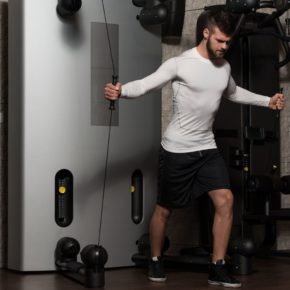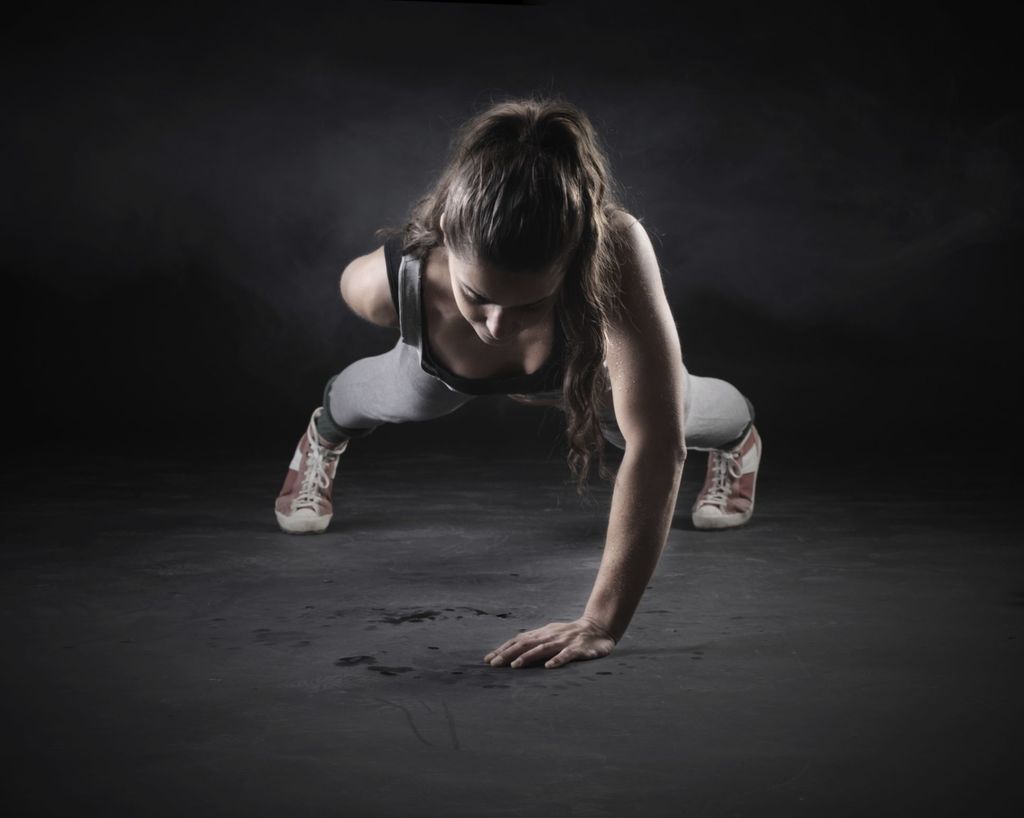Finally, the functional movement series has advanced upon my favorite subject: the push. There is not much in the history of fitness I love more than the push-up (as many of my clients can attest). A push, however, is so much more than the humble push-up and its never-ending extent of subtypes.
What is a push?
Merriam-Webster defines the word push as: to use force to move (someone or something) forward or away from you; to go forward while using your hands, arms, etc., to forcefully move people or things that are blocking you. When applied to exercise, I would add to the definition: against resistance. Outside of the gym, we push constantly. Closing a door. Steering a grocery cart or stroller. Getting up out of bed. Reaching a heavy object overhead to place on a shelf. While these tasks aren’t necessarily the heaviest, the conditioning is crucial to lifelong efficient movement.

What muscles are being used?
Primarily pushes work our:
- Pectoralis major (dominant chest muscle)
- Pectoralis minor (upper chest muscle)
- Triceps brachii (backs of arms)
Secondary muscles can include:
- Erector Spinae (back stabilizers)
- Deltoids anterior, lateral and posterior (muscles of the shoulder)
- Gluteals maximus, minimus and medius (butt muscles)
- Rectus Abdominis (abs, or “six-pack”)
- Quadriceps Femoris (fronts of thighs)
- Tibialis Anterior (fronts of shins)
Why is the push important?
As you can see from above, the push can target the majority of the muscles in our body, depending on the exercise. Upper body strength (especially for women) allows us to tackle everyday tasks more easily, with less risk for injury. Gaining the independence to move our own furniture, close a heavy door, or even press our own body weight from the floor can be very powerful and satisfying.
What could possibly go wrong?
More than any other functional movement, the biggest risk I see with push exercises is overuse. I recall training a male in his early 20s who would proudly unfold his “program” he put together for the days I didn’t see him. While I applauded his efforts — he even wrote it down! — his workout consisted of a couple of squats and roughly 17 variations on the bench press. Let me say one thing: desperation will never get you to your goals faster. Not only that, his poor pectorals had probably given up in the name of self-preservation by the fourth exercise. His posture gave him away: rounded shoulders, his head tilted forward, his pelvis tucked (creating undo strain on the lower back), and the dead giveaway every time: his knuckles faced front when arms relaxed. “Orangutan” arms, as I often call them (sorry, adorable monkeys. It’s not personal.).
Okay, these are getting boring. What else can I do?
Maybe we should take your pulse. Here is one category that should never get boring. For inspiration, however, I can help. Try to hum R.E.M.’s It’s The End of the World As We Know It for this part: classic push-ups, diamond push-ups, chaturanga, single arm push-ups, spider push-ups, superman push-ups, incline push-ups, decline push-ups, upside-down Bosu push-ups, right side-up Bosu push-ups, uneven push-ups, running push-ups, plyometric push-ups, jumping jack push-ups, atomic push-ups, scorpion push-ups, wall push-ups, marine push-ups, chest flye, cable chest flye, single arm cable chest flye, bench press, bench press from Swiss ball, single arm bench press, seated military dumbbell press, standing neutral dumbbell press, sled push, Prowler push, walking planks, side planks, elbow planks, Swiss ball planks and plank jacks. I may have left a few out.
Now, get to work.
 Jodilyn Stuart is the Health & Sports Senior Staff Writer for 303 Magazine, owner of ModaBody Fitness, and has been a professional fitness geek since 1997. If you have questions, feel free to email at: Jodilyn@303Magazine.com
Jodilyn Stuart is the Health & Sports Senior Staff Writer for 303 Magazine, owner of ModaBody Fitness, and has been a professional fitness geek since 1997. If you have questions, feel free to email at: Jodilyn@303Magazine.com






Love it! Jodilyn always has a great and new ways to do push-ups! This is why I love her classes so much! We do a lot of these in her Tabata class that I take. Let me tell you, my upper body is getting much stronger, and yes, it is not always just the same old boring push-ups, always something new.
This makes me want to do exercises right now, but I can’t because I’m working. Maybe later, or when I can do push-ups properly.
Nice post! A lot of people are into push-ups but some are doing it wrong. They should learn from you.